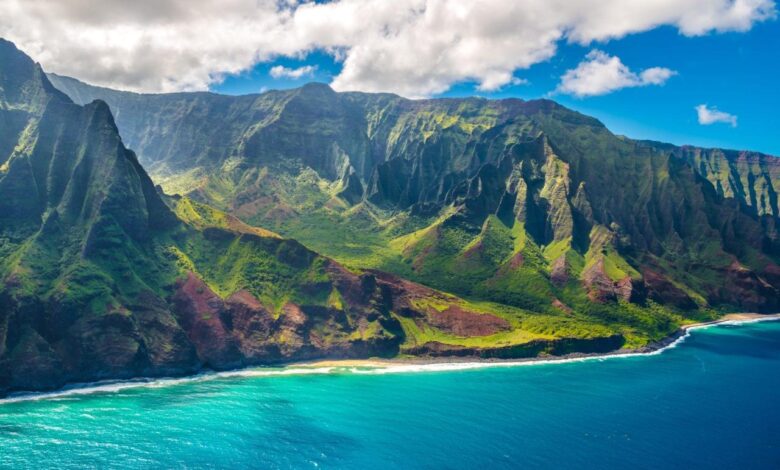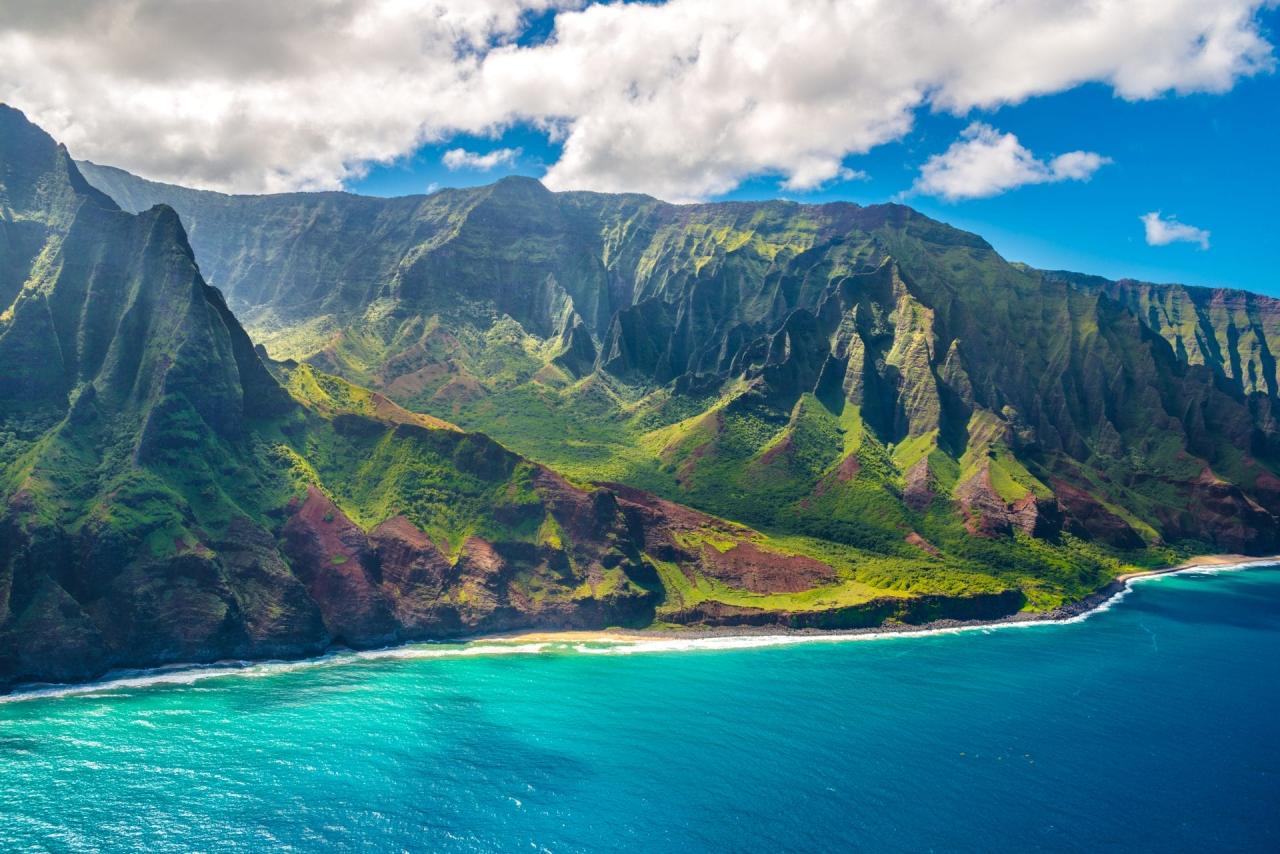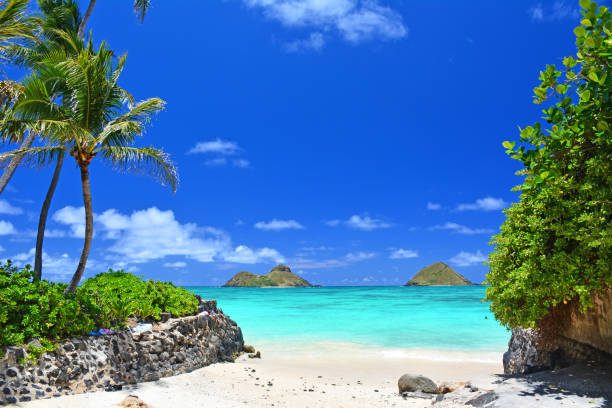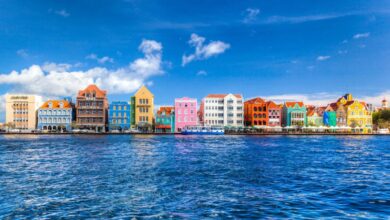The Global Search for Secluded Shorelines Intensifies

Beyond the Crowded Coastlines
In an era where iconic beaches from Bali to Barcelona buckle under the weight of overtourism, a quiet revolution is unfolding along the world’s forgotten coastlines. The modern traveler, increasingly disillusioned with crowded shores and commercialized beach experiences, is embarking on a determined quest for secluded stretches of sand untouched by mass tourism. This movement represents more than a simple preference for quieter vacations; it’s a fundamental shift in travel philosophy that values authenticity, sustainability, and personal discovery over convenience and Instagram-famous backdrops. From hidden coves accessible only by foot to remote islands barely touched by modern infrastructure, these emerging beach destinations offer not just sun and surf, but a profound sense of discovery and connection with nature’s unspoiled beauty. This comprehensive guide explores the cultural drivers behind this trend, reveals little-known coastal gems across continents, and provides practical strategies for finding and responsibly enjoying your own private paradise.
A. The Cultural Shift Driving the Search for Seclusion
Multiple interconnected social and environmental factors have converged to make hidden beach destinations increasingly desirable.
A.1. The Overtourism Backlash and Quest for Authenticity
As famous beach destinations become victims of their own popularity, travelers are seeking alternatives that offer genuine experiences.
-
Rejection of Commercialized Experiences: The endless rows of identical sun loungers, inflated prices, and generic souvenir shops have driven discerning travelers to seek coastlines where local culture remains dominant over tourist infrastructure.
-
Digital Fatigue and the Search for Disconnection: In our hyper-connected world, truly remote beaches offer rare opportunities for digital detoxification, where the only notifications come from seabirds and waves rather than smartphones.
-
The Prestige of Discovery: Social media has created a new form of travel prestige centered around being first to discover and share unknown locations, driving adventurous travelers further off the beaten path in search of undiscovered shores.
A.2. The Sustainability Awakening Among Travelers
Growing environmental consciousness has made eco-sensitive beach travel increasingly desirable.
-
Minimizing Environmental Impact: Thoughtful travelers recognize that crowded beaches often suffer from pollution, coral damage, and ecosystem stress, leading them to choose less-visited alternatives where their presence has lower impact.
-
Supporting Coastal Conservation: Many hidden beaches are located near communities actively engaged in conservation efforts, allowing visitors to contribute to preservation through responsible tourism.
-
Cultural Preservation Concerns: Travelers increasingly understand that mass tourism can erode local traditions and communities, making culturally intact coastal villages more appealing destinations.
A.3. The Evolution of Adventure Travel
Beach vacations are no longer synonymous with passive lounging but increasingly incorporate active exploration.
-
The Journey as Destination: Reaching hidden beaches often requires hiking, boating, or even swimming, transforming the trip into an adventure rather than mere transportation.
-
Multi-Activity Coastal Experiences: Secluded beaches frequently serve as bases for kayaking, snorkeling in pristine waters, coastal trekking, and wildlife observation far from crowded tour groups.
-
Skill-Based Beach Travel: Travelers increasingly seek destinations where they can learn new skills like fishing with local methods, traditional boat building, or identifying coastal ecosystems.
B. Continental Guide to Emerging Beach Destinations
Across the globe, previously overlooked coastal areas are gaining attention among travelers seeking authentic experiences.
B.1. Asia’s Undiscovered Island Paradises
Beyond the tourist hubs of Thailand and Indonesia, Asia conceals countless pristine beach destinations.
-
The Philippines’ Palawan Archipelago: While El Nido receives growing attention, the neighboring islands of Dumaran and Culion offer similarly spectacular limestone karsts and azure waters with minimal tourist infrastructure. The Cuyo Islands further south provide a glimpse of traditional Philippine coastal life virtually untouched by tourism.
-
Indonesia’s Forgotten Islands: Beyond Bali and Lombok, the Sumba and Sumbawa regions feature world-class surf breaks, traditional villages, and spectacular beaches like Weekuri Lagoon without the crowds of more famous neighbors. The remote Anambas Islands in Indonesia’s Riau archipelago rival the Maldives in beauty while receiving only a fraction of the visitors.
-
Vietnam’s Con Dao Archipelago: This collection of 16 islands features pristine beaches, historic sites, and some of Vietnam’s best snorkeling and diving, all protected within a national park that limits development and maintains its secluded atmosphere.
B.2. Europe’s Secret Coastal Escapes
The Mediterranean and Atlantic coasts hide numerous uncrowded beach alternatives to popular resorts.
-
Albanian Riviera: While gaining attention, Albania’s coastline between Vlore and Sarandë remains remarkably undeveloped compared to neighboring Greece and Croatia, with stunning beaches like Gjipe Beach accessible only by foot or boat and traditional villages where ancient customs prevail.
-
Portugal’s Southwest Alentejo: North of the Algarve’s tourist centers, this protected coastal region features endless empty beaches backed by dramatic cliffs, with fishing villages like Zambujeira do Mar maintaining their authentic character despite increasing recognition.
-
Italy’s Salento Peninsula: While Puglia grows popular, the very tip of Italy’s heel around Santa Maria di Leuca remains relatively undiscovered, with stunning grottoes, crystal-clear waters, and historic architecture without the crowds of the Amalfi Coast.
B.3. The Americas’ Hidden Coastal Gems
From the Caribbean to Patagonia, the Western Hemisphere offers countless secluded beach experiences.
-
Mexico’s Costa Nayarit: North of popular Puerto Vallarta, this coastline features fishing villages like San Pancho and Sayulita alternatives like Lo de Marcos that offer authentic Mexican culture alongside beautiful beaches with significantly fewer visitors.
-
Brazil’s Piauí Coast: As Brazil’s shortest coastline, Piauí receives minimal attention compared to northeastern neighbors, yet features spectacular desert dunes meeting ocean at places like Praia do Coqueiro, with virtually no tourist infrastructure.
-
Canada’s Gulf Islands: British Columbia’s lesser-known Gulf Islands like Saturna and Galiano offer rocky coves, pastoral landscapes, and artisan communities providing a completely different beach experience from tropical destinations.
C. The Practical Guide to Discovering Hidden Beaches
Finding and accessing secluded shorelines requires different strategies from conventional beach travel.
C.1. Research Methodologies for Finding Secluded Shores
Traditional travel guides often miss emerging beach destinations, requiring alternative research approaches.
-
Satellite Imaging Exploration: Tools like Google Earth allow visual scanning of coastlines for promising beaches without visible access roads or development, often revealing hidden coves and bays invisible on standard maps.
-
Local Knowledge Mining: Instead of relying on tourist information, seek out fishing communities, local marine biologists, or coastal conservation organizations who possess intimate knowledge of inaccessible beaches.
-
Specialized Travel Forums: Niche travel communities focused on sailing, surfing, or hiking often share information about beach destinations well before they appear in mainstream travel media.
C.2. Access Strategies for Remote Coastal Locations
Reaching hidden beaches often requires creativity and flexibility in transportation and timing.
-
Tidal Timing Considerations: Many hidden beaches are only accessible at low tide, requiring careful planning and local tide charts to visit safely without becoming stranded.
-
Alternative Transportation Methods: Reaching secluded shores often requires renting small boats, hiring local fishermen as guides, or undertaking substantial hikes beyond where standard tourist transportation reaches.
-
Seasonal Strategy Development: Visiting during shoulder seasons or even winter months can transform popular hidden destinations into truly secluded experiences, though this requires accepting different weather conditions.
C.3. Preparation for Limited Infrastructure
Hidden beaches typically lack the amenities of developed tourist destinations, requiring thorough preparation.
-
Self-Sufficiency Planning: Visitors must typically bring their own food, water, sun protection, and emergency supplies, as even basic services are often unavailable.
-
Safety Precautions: Remote beaches rarely have lifeguards, reliable communication signals, or quick access to medical care, requiring visitors to exercise greater caution and self-reliance.
-
Navigation Readiness: GPS devices, paper maps, and compasses are essential as mobile service is often unreliable in coastal areas where hidden beaches are located.
D. Responsible Engagement with Emerging Coastal Destinations
The very act of visiting hidden beaches risks damaging what makes them special without careful ethical practices.
D.1. Minimizing Environmental Impact
Visitors to pristine beaches carry responsibility for preserving their unspoiled nature.
-
Strict Leave-No-Trace Principles: All visitors must pack out everything they bring, including all food waste and toilet paper, as these environments lack waste management infrastructure.
-
Marine Ecosystem Protection: Coral, seaweed beds, and coastal vegetation are extremely vulnerable to damage from anchors, footsteps, and collection of marine souvenirs.
-
Sustainable Transportation Choices: Where possible, visitors should choose sailing, kayaking, or hiking over motorized transport to reach sensitive coastal areas.
D.2. Respectful Cultural Engagement
Hidden beaches often exist within traditional communities with distinct cultures and livelihoods.
-
Economic Integration: Rather than bringing all supplies, travelers should purchase provisions from local fishermen and village shops to ensure tourism benefits the community.
-
Cultural Sensitivity: Clothing standards, photography protocols, and interaction customs may differ significantly from urban areas or developed tourist destinations.
-
Permission Practices: Access to certain beaches may require permission from local communities or landowners, requiring respectful inquiry rather than assumption of access rights.
D.3. Digital Sharing Ethics
The dilemma of sharing hidden beach locations requires careful consideration in the social media age.
-
Geotagging Responsibility: Consider sharing general region information rather than specific coordinates to prevent overwhelming fragile destinations with sudden visitor surges.
-
Educational Sharing: When sharing experiences, emphasize responsible visitation practices and environmental awareness alongside the beauty of the location.
-
Community Consultation: In some cases, local communities may prefer their beaches remain less known, requiring respect for their wishes regarding publicity.
E. The Future of Hidden Beach Tourism
As the search for secluded shores intensifies, new patterns and considerations are emerging in coastal travel.
E.1. Conservation-Led Tourism Development
Some emerging beach destinations are pioneering alternative development models.
-
Community-Controlled Tourism: Locations like the Philippines’ San Vicente are implementing carrying capacity limits and community-managed tourism to prevent overtourism before it begins.
-
Conservation-First Business Models: Eco-resorts in places like Panama’s Bocas del Toro archipelago are building environmental protection directly into their business structures rather than as add-on initiatives.
-
Scientific Tourism Integration: Some remote coastal areas now offer tourism experiences directly supporting marine research and conservation efforts.
E.2. Climate Change Vulnerability
The very existence of many hidden beaches is threatened by environmental changes.
-
Coastal Erosion Concerns: Many secluded beaches face severe erosion from sea-level rise and changing weather patterns, making their long-term preservation uncertain.
-
Ecosystem Shifts: Warming waters are causing coral bleaching and marine ecosystem changes even in previously pristine areas, altering the fundamental character of these destinations.
-
Travel Pattern Adjustments: Visitors may need to reconsider seasonal travel patterns as traditional weather systems become less predictable.
E.3. The Next Frontier of Beach Travel
As current hidden gems face growing pressure, new destinations will inevitably emerge.
-
Cold Water Beach Appreciation: Travelers are increasingly discovering the dramatic beauty of coastal areas in destinations like Norway, Iceland, and Patagonia as alternatives to tropical beaches.
-
Restorative Coastal Experiences: The future may see greater interest in beaches offering wellness and restoration opportunities rather than simply sun and swimming.
-
Virtual Exploration Alternatives: For some overly fragile coastal ecosystems, virtual reality experiences may eventually offer sustainable alternatives to physical visitation.
Conclusion: The Enduring Allure of Coastal Discovery
The growing fascination with hidden beaches represents more than a temporary travel trend—it reflects a deeper human yearning for connection with unspoiled nature and authentic cultural experiences. In a world where few places remain truly unknown, the pursuit of secluded shorelines satisfies our fundamental need for discovery while encouraging more mindful and sustainable travel practices. As this movement evolves, it challenges both travelers and the tourism industry to reimagine beach vacations not as standardized products but as opportunities for personal adventure, cultural exchange, and environmental stewardship. The future of coastal tourism lies not in creating new resort developments, but in preserving the magic of discovery for generations to come, ensuring that the sound of waves on an empty beach remains one of travel’s most precious experiences.
Tags: hidden beaches, secluded beaches, undiscovered coastlines, beach travel, sustainable tourism, overtourism, coastal conservation, remote travel, secret beaches, alternative destinations, responsible travel, island hopping







